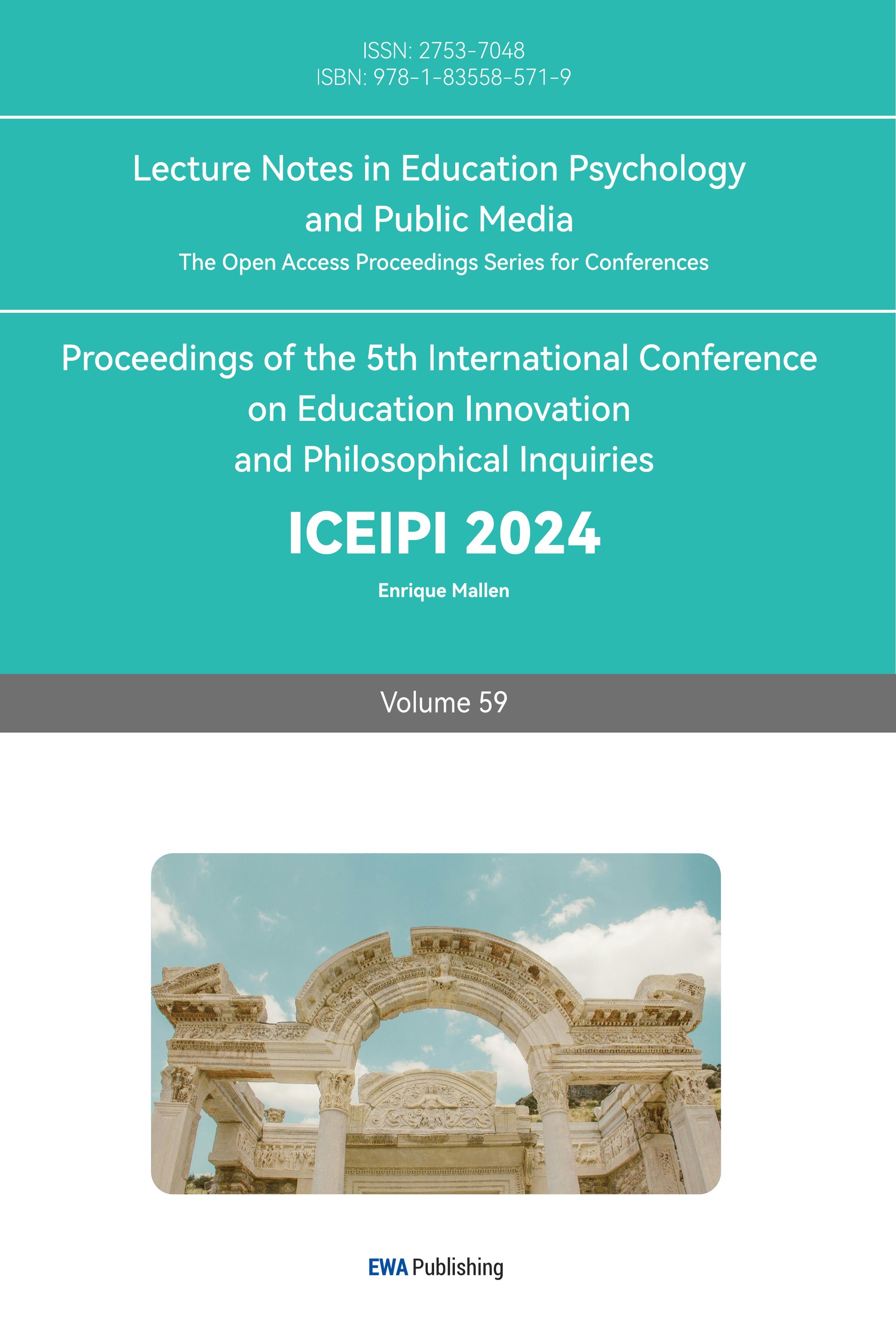1. Introduction
The core topic of the film Green Book—racism and class prejudice in the United States—is achieved through the characters' subliminal impact on one another and their mutual spiritual restoration. One of the most well-known perfumes in the world is "Chanel No. 5." It is investigated how advertisements broadly disseminate information, attracting the attention of potential customers and stimulating their desire to buy, and how movies attract the public's attention and entice them to watch through a multimodal discourse analysis of these, including other movie posters and advertisements [1][2][3].
1.1. Theoretical Background
The foundation of multimodal discourse analysis is multimodal discourse theory, whose theoretical basis comes from Halliday's “Systemic Functional Grammar.” Systemic Functional Grammar provides a complete framework for discourse analysis and becomes an important theoretical foundation for multimodal discourse analysis in the early stages. Modality, including language, image, color, music, and other symbol systems, is the channel and medium of communication. Multimodal discourse analysis attempts to study how these semiotic systems cooperate to convey complex meanings and messages. Kress and Leeuwen first introduced the concept of “visual grammar” in 1996, thus expanding the field of discourse analysis into the study of nonverbal data. Halliday's conceptual, interpersonal, and discursive functions propose the reproduction, interaction, and compositional meaning of images [4][5][6][7].
1.2. Current Study
Multimodal discourse analysis has been widely used in advertising, movie posters, cross-border e-commerce, and many other fields. These studies have extensively referred to and adopted Kress and Van Leeuwen's notion of visual grammar to examine how images create meaning and convey information. When it comes to movie posters, researchers took a close look at movie posters such as the Green Book and the Wolf II. In advertising, the study of how the text, color, and structure of Amazon ads help convey movie ideas and engage viewers. More generally, researchers have conducted multimodal studies of advertisements on cross-border e-commerce sites to further demonstrate how internal synergies like font style, color choices, and image arrangement work together to enhance the brand's appeal and marketabilit [1][8][9][10][11][12].
1.3. Research Gaps
Despite extensive studies, there is a lack of systematic analysis of posters for specific movie series and product ads. Existing literature mainly focuses on multimodal theory and analysis of movie posters and ads but lacks in-depth comparative analysis of their textual, color, and layout modalities, as well as stylistic and internal modalities. It's crucial to explore how multimodal discourse analysis can enhance user experience by improving advertisement impact and placement. As technology advances, multimodal advertising will play a crucial role in market competition, highlighting the need for further research in movie publicity and product promotion [13].
1.4. Research Implications
Using Halliday's Systemic Functional Linguistics and Kress and Van Leeuwen's Visual Grammar as the theoretical foundation, we analyze the multimodal discourse of movie posters and advertisements in terms of conceptual, discursive, and interpersonal functions, reproduced, interactional, and combinatorial meanings, as well as color, text, and layout modality. The analysis of movies and posters refers to how posters can convey the main content, ideology, and cultural aspects of movies with multiple meanings through multimodal means and how advertisements can elicit the audience's emotional identification and recognition through multimodal discourse analysis techniques so as to convey brand value and expand sales. This analytical approach has important theoretical and practical value in the current era to help us better understand and explain the complex meaning construction process of multimodal discourse [14][15][16][17].
2. Multimodal discourse analysis
2.1. Theory
Multimodal discourse analysis, based on Halliday's Systemic Functional Grammar, examines communication through multiple modalities such as language, images, colors, and music. Kress and Leeuwen introduced "visual grammar" in 1996, analyzing images' social meanings through Halliday's meta-functions: conceptual, interpersonal, and discourse. Key aspects include "contact" (eye interaction: "demand" and "offer"), "social distance" (relationship through views), "angle" (horizontal or vertical perspectives), and "mood" (color attributes affecting realism). These elements enhance understanding in today's information-rich, multimodal communication environment [4][6][18].
Kress and van Leeuwen, building on Halliday's functional grammar, suggest that language meanings also exist in non-linguistic scenes. They introduced visual grammar, encompassing reproduction, interaction, and composition meanings, to enhance multimodal discourse analysis. Reproduction meaning includes narrative (depicting events) and conceptual (static participants) types. Interaction meaning covers contact, social distance, attitude, and mood, conveying information and reflecting viewer attitudes. Compositional meaning involves information value, highlighting, and framing, shaping viewer perception. This multimodal analysis aligns with Halliday's conceptual, interpersonal, and discourse functions, enhancing understanding of visual communication. Analyzing text, color, and layout in movie posters and ads reveals their communication impacts [14].
2.2. Textual Modal
2.2.1. Movie Poster Analysis
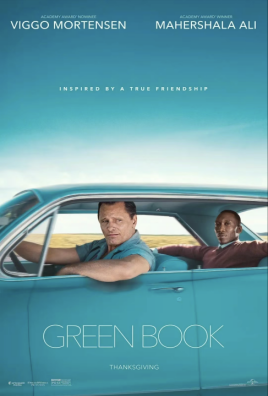
Figure 1: Movie Poster for Green Book(U.S. version) [3]
The U.S. version of the poster features less text, with the larger, white, non-bold, capitalised word ‘GREEN BOOK’ in AvenirNext-Ultralight at the bottom, which has an overall square, rounded look to it, and communicates the film's title to the viewer in an eye-catching and subdued way; and the top, white, capitalised and bolded word ‘VIGGO MORTENSEN’ and ‘MAHERSHALA ALI’, in Aira font size, symmetrical at the left and right ends, informs the audience of the names of the two actors of the film, so that the audience can learn the main information from the poster at first glance. The poster contains information. Above these two lines of text, there is a small white line ‘ACADEMY AWARD NOMINEE’ and ‘ACADEMY AWARD WINNER’ in Aira font size, which conveys the film's awards and adds to the attractiveness of the poster. The font size is Aira, which conveys the film's award message and adds to its appeal [3].

Figure 2: Movie Poster for The Invisible Guest [19]
The poster features the headline "Deception over the Sea" and its English translation "The Invisible Guest," appealing to a global audience. The English title uses a modern font, while the Chinese title employs a bold, classic font, emphasizing seriousness and passion. The phrase "谁在践踏规则,谁在俯视正义" (Who is stomping on the rules, who is looking down on justice?) uses rhetorical questions to evoke mystery and curiosity about the film's themes of morality and justice. "眼见为实?" (See, then believe?) and the release date "12月8日" (December 8th) are prominently displayed, driving interest. The director's name "导演 | 陈卓" (director | Chen Zhuo) is noted beneath the title. The centrally positioned title commands the most attention, with other elements cascading down from the top [3][20].
2.2.2. Advertisement Analysis
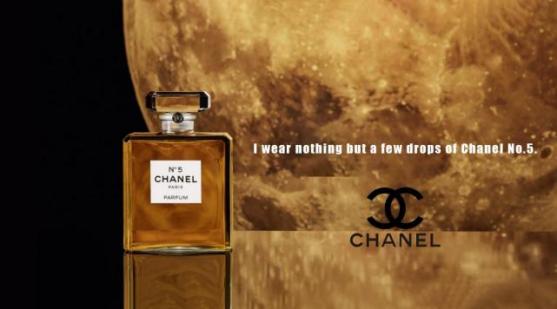
Figure 3: Advertisement for CHANEL N°5 Perfume [21]
The most prominent text in the advertisement is "CHANEL N°5," indicating the product's name. The lower half features the "CHANEL" brand name and "double C" emblem, enhancing brand recognition. The text reflects fundamental product information, enabling clear understanding. The slogan "I wear nothing but a few drops of Chanel No.5" conveys confidence and elegance, suggesting a lifestyle and attitude. The typography is straightforward, modern, and attractive, supporting the brand's upscale image. The ad's focal point is the large, centered product name, with the brand name and emblem creating visual harmony. White text stands out against the background, enhancing readability and impact. The meticulous typeface and style uphold Chanel's luxury image and market competitiveness [22].


Figure 4: Advertisement for “Pejoy” [23] Figure 5: Advertisement for Pork Sausage [23]
The first poster uses phrases like "速抢!优惠6.5折起" (Rush to buy! Discounts starting at 35% off) to create urgency. Descriptive words like "根根浓醇" (rich in flavor) and "甜蜜好味" (sweet and delicious) appeal to consumers' taste. The collaboration with "天猫超市" (Tmall Supermarket) and "Glico" boosts brand recognition and trust. Key promotional messages and discounts are displayed in bold, large fonts, with "6.5折起" highlighted as the focal point. Strategic text placement around product images guides the viewer's gaze, while contrasting colors make the message stand out [15][24].
The second poster prominently displays "90%" to emphasize high pork content, appealing to quality-seeking consumers. Phrases like "领券下单 立减17元" (Get a coupon to order and save 17 yuan immediately) incentivize purchases. The word "精选" (selected) assures quality. The large, bold "90%" highlights the product's main selling point. Text structure creates a visual hierarchy, emphasizing pork content and discount first. Contrasting colors enhance readability, and strategic text placement around the product image ensures focus on both the image and promotional details [15][24].
2.3. Color Modal
2.3.1. Movie Poster Analysis
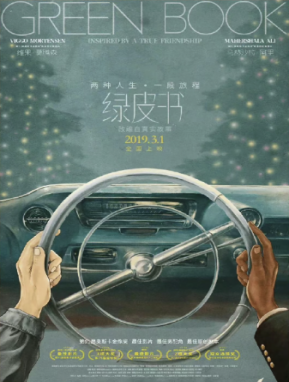
Figure 6: Movie Poster for Green Book(Chinese version) [3]
The dark green color of the poster of the Chinese version of Green Book in Figure 6 invariably gives people a depressing feeling and highlights the rhythm and mood of the whole film; the two hands of different colors highlight the identity of the main characters—black and white; and the overall light pink frame contrasts with the dark green interior. The whole poster gives readers a visual feeling more like the cover of a book, which is echoed in the name of the film, Green Book, to achieve a complementary and reinforcing effect. The high-saturation yellow is contrasted with the low-saturation dark green to highlight the film's release date. The high-saturation yellow is contrasted with the low-saturation dark green to highlight the film's release date [3].
2.3.2. 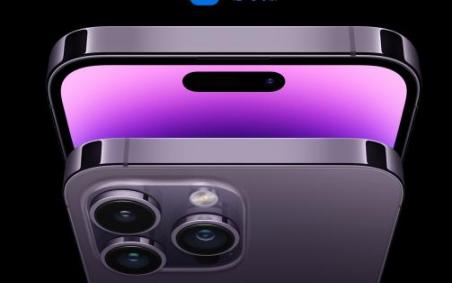 Advertisement Analysis
Advertisement Analysis
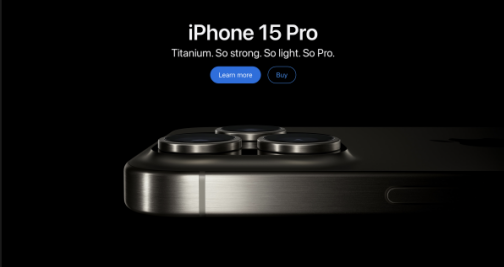
Figure 7: Advertisement for iPhone 14 pro [25] Figure 8: Advertisement for iPhone 15 pro [25]
The color choice in Apple's advertisement impacts the audience's visual and emotional response. Using a black background highlights the premium, technological feel of Apple products and makes the phone stand out. The contrast between the titanium case and dark lens emphasizes the product's high-tech nature. Bright elements like the lens reflection and purple screen sheen enhance appeal and highlight design details. This contrast directs attention to key features, improving visual impact and message efficiency. The black and titanium colors convey stability and high quality, while the purple adds a futuristic touch, stimulating purchase desire. Apple's clean, modern design style and color scheme reinforce its brand image and facilitate quick brand recognition and emotional connection [9][14].
2.4. Analysis of the Significance of the Interaction
2.4.1. Movie Poster Analysis

Figure 9: Movie Poster for Wolf II [26]
In the interactive sense, social distance refers to the proximity between viewers and the picture's participants, classified into intimate, personal, social, and public distances. This framing allows viewers to intuitively feel the movie's visual impact and reflect on its content. Kress and Van Leeuwen define contact as the gaze between the subject and the observer, divided into asking and offering. In the movie poster, characters, except Leng Feng, appear distant, allowing viewers to imagine themselves in their shoes, enhancing anticipation. The frontal view of characters like Wu Jing's Leng Feng and the villains lets viewers see their expressions and immerse in the plot [26].
2.4.2. Advertisement Analysis
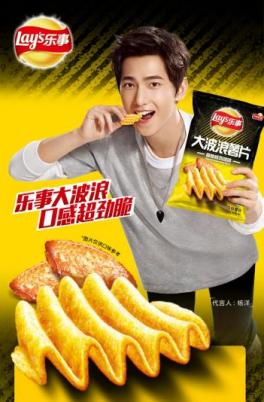
Figure 10: Advertisement for Lay's Potato Chips [27]
The advertisement shows a close-up shot of the spokesperson, Yang Yang, who is holding potato chips with a smile on his face. This close-up shot closes the distance between the audience and the spokesperson, making the audience feel close and trusting. The close-up shot of the spokesperson makes the audience feel that he is right beside them, enhancing the sense of closeness and trust, which in turn enhances the degree of goodwill towards the product. Yang Yang's gaze does not look directly at the audience, but rather at the potato chips in his hand. This direction of gaze suggests the attractiveness and deliciousness of the product, leading the audience to focus on the chips. Yang Yang's smile and enjoyable expression convey love and satisfaction with the product, further leading the audience to develop positive expectations [14][22].
3. Conclusion
Multimodal discourse analysis aids in understanding and designing advertisements and movie posters by utilizing Halliday's Systemic Functional Grammar and Kress and Van Leeuwen's Visual Grammar. Studies on posters for films like Green Book and The Invisible Guest highlight themes, characters, and narratives through color, text layout, and images. Analyses of ads for Chanel No. 5 and Pejoy snacks show how visuals and texts emphasize brand image and product appeal to attract consumers. These studies underscore the importance of multimodality in conveying appealing messages.
References
[1]. Kress G. Reading images: Multimodality, representation and new media[J]. Information Design Journal, 2004, 12(2): 110-119.
[2]. Guo Zi. Multi-modal Discourse Analysis of Chinese Hit Film Poster the Battle at Lake Changjin[J]. Frontiers in Art Research, 2023, 5(8).
[3]. Zhang Chunlei. A multimodal stylistic comparison study of movie promotional posters[J]. Modern Communication,2021(14):89-91.
[4]. Halliday M A K, Matthiessen C M I M. Halliday's introduction to functional grammar[M]. Routledge, 2013.
[5]. Kress G, Bezemer J. Multimodal discourse analysis[M]//The Routledge handbook of discourse analysis. Routledge, 2023: 139-155.
[6]. Kress,G.,& Leeuwen,T.Reading images[M].Burwood:Brown Prior Anderson,1996
[7]. Kress G, Van Leeuwen T. Reading images: The grammar of visual design[M]. Routledge, 2020.
[8]. Ai M. Multimodal Discourse Analysis of the Poster of the Movie Octagonal[J]. International Journal of Linguistics, Literature and Translation, 2024, 7(4): 71-75.
[9]. Alhumsi M H. The Practicability of Language in Business Context: a Study of Linguistic Tools in Business Discourse[J]. Educational linguistics research, 2021, 7(2): 24-32.
[10]. Iftikhar S, Shahnaz A, Masroor F. Multimodal Discourse Analysis of the Poster Covers of Academy Award Winning Animated Feature Movies[J]. Putaj Humanities & Social Sciences, 2019, 26(2).
[11]. Yin L, Hassan H. Multimodal Discourse Analysis of the Movie Poster Little Big Soldier[J]. International Journal of Languages, Literature and Linguistics, 2021, 7(3): 101-105.
[12]. Junfang Mu, Qingqing Zhang. A study on the ecological construction of new energy vehicle advertisements under the visual grammar perspective--Taking 2020 Audi new energy vehicle advertisements as an example[J]. Journal of University of Science and Technology Beijing (Social Science Edition), 2022,38(04):419-428.DOI:10.19979/j.cnki.issn10082689.2022040032.
[13]. Zhang, Delu. A Review of Han Lide's Theory of Functional Stylistics[J]. [29] Zhang, Delu. A review of Han Lide's theory of functional stylistics[J].
[14]. Forceville C. Educating the eye? Kress and Van Leeuwen’s reading images: The grammar of visual design (1996)[J]. Language and Literature, 1999, 8(2): 163-178.
[15]. Ye Lu, Du Linxian, Zhang Jingjing,et al. Multimodal Discourse Construction and Translation of Cross-border E-commerce English Websites--Taking Amazon.com as an Example[J]. Overseas English,2024(07):82-85.
[16]. Zhang, Delu. The role of cultural context in multimodal discourse construction[J]. Journal of Foreign Languages College of the PLA,2023,46(05):54-61+161.
[17]. Zhang Xiaolan. Corpus-based construction of female identity in feminine hygiene product advertisements [D]. Shandong University, 2024.DOI:10.27272/d.cnki.gshdu.2023.000926.
[18]. Zhang Delu. A comprehensive framework for multimodal discourse analysis under the threshold of systemic function theory[J]. Modern Foreign Language,2018,41(06):731-743.
[19]. Iqiyi. 2023. “Iqiyi.” Iqiyi. 2023. https://www.iqiyi.com.
[20]. Zhu Qingqing, Zhao Tianmin. Multimodal Discourse Analysis of the Movie Poster of "Young You"[J]. China Ethnic Expo,2023(13):183-185.
[21]. Chanel. 2024. “Chanel.” Chanel. 2024. https://www.chanel.com/.
[22]. Xing C, Feng D. Multimodal intertextuality and persuasion in advertising discourse[J]. Discourse & Communication, 2023, 17(5): 613-629.
[23]. Tall Mart. 2024. “Tall Mart.” Tall Mart. 2024. https://chaoshi.tmall.com/.
[24]. Napitupulu L H, Bako E N, Ars N R, et al. A multimodal analysis of advertisement of online marketplace Shopee[J]. KnE Social Sciences, 2018: 452-460-452-460.
[25]. Apple. 2024. “Apple.” Apple. 2024. https://www.apple.com.
[26]. Wang Beiyi, Chen Jiayu, Zhang Rongrong. Multimodal Discourse Analysis: An Example of Theme Posters of "The Wolf" Series[J]. Footwear Craft and Design,2022,2(08):97-99.
[27]. Lay’s. 2020. “Lay’s.” Lay’s. 2020. https://www.lays.com/
Cite this article
Zhao,H. (2024). A Multimodal Discourse Analysis of Advertisements and Movie Posters. Lecture Notes in Education Psychology and Public Media,59,66-73.
Data availability
The datasets used and/or analyzed during the current study will be available from the authors upon reasonable request.
Disclaimer/Publisher's Note
The statements, opinions and data contained in all publications are solely those of the individual author(s) and contributor(s) and not of EWA Publishing and/or the editor(s). EWA Publishing and/or the editor(s) disclaim responsibility for any injury to people or property resulting from any ideas, methods, instructions or products referred to in the content.
About volume
Volume title: Proceedings of the 5th International Conference on Education Innovation and Philosophical Inquiries
© 2024 by the author(s). Licensee EWA Publishing, Oxford, UK. This article is an open access article distributed under the terms and
conditions of the Creative Commons Attribution (CC BY) license. Authors who
publish this series agree to the following terms:
1. Authors retain copyright and grant the series right of first publication with the work simultaneously licensed under a Creative Commons
Attribution License that allows others to share the work with an acknowledgment of the work's authorship and initial publication in this
series.
2. Authors are able to enter into separate, additional contractual arrangements for the non-exclusive distribution of the series's published
version of the work (e.g., post it to an institutional repository or publish it in a book), with an acknowledgment of its initial
publication in this series.
3. Authors are permitted and encouraged to post their work online (e.g., in institutional repositories or on their website) prior to and
during the submission process, as it can lead to productive exchanges, as well as earlier and greater citation of published work (See
Open access policy for details).
References
[1]. Kress G. Reading images: Multimodality, representation and new media[J]. Information Design Journal, 2004, 12(2): 110-119.
[2]. Guo Zi. Multi-modal Discourse Analysis of Chinese Hit Film Poster the Battle at Lake Changjin[J]. Frontiers in Art Research, 2023, 5(8).
[3]. Zhang Chunlei. A multimodal stylistic comparison study of movie promotional posters[J]. Modern Communication,2021(14):89-91.
[4]. Halliday M A K, Matthiessen C M I M. Halliday's introduction to functional grammar[M]. Routledge, 2013.
[5]. Kress G, Bezemer J. Multimodal discourse analysis[M]//The Routledge handbook of discourse analysis. Routledge, 2023: 139-155.
[6]. Kress,G.,& Leeuwen,T.Reading images[M].Burwood:Brown Prior Anderson,1996
[7]. Kress G, Van Leeuwen T. Reading images: The grammar of visual design[M]. Routledge, 2020.
[8]. Ai M. Multimodal Discourse Analysis of the Poster of the Movie Octagonal[J]. International Journal of Linguistics, Literature and Translation, 2024, 7(4): 71-75.
[9]. Alhumsi M H. The Practicability of Language in Business Context: a Study of Linguistic Tools in Business Discourse[J]. Educational linguistics research, 2021, 7(2): 24-32.
[10]. Iftikhar S, Shahnaz A, Masroor F. Multimodal Discourse Analysis of the Poster Covers of Academy Award Winning Animated Feature Movies[J]. Putaj Humanities & Social Sciences, 2019, 26(2).
[11]. Yin L, Hassan H. Multimodal Discourse Analysis of the Movie Poster Little Big Soldier[J]. International Journal of Languages, Literature and Linguistics, 2021, 7(3): 101-105.
[12]. Junfang Mu, Qingqing Zhang. A study on the ecological construction of new energy vehicle advertisements under the visual grammar perspective--Taking 2020 Audi new energy vehicle advertisements as an example[J]. Journal of University of Science and Technology Beijing (Social Science Edition), 2022,38(04):419-428.DOI:10.19979/j.cnki.issn10082689.2022040032.
[13]. Zhang, Delu. A Review of Han Lide's Theory of Functional Stylistics[J]. [29] Zhang, Delu. A review of Han Lide's theory of functional stylistics[J].
[14]. Forceville C. Educating the eye? Kress and Van Leeuwen’s reading images: The grammar of visual design (1996)[J]. Language and Literature, 1999, 8(2): 163-178.
[15]. Ye Lu, Du Linxian, Zhang Jingjing,et al. Multimodal Discourse Construction and Translation of Cross-border E-commerce English Websites--Taking Amazon.com as an Example[J]. Overseas English,2024(07):82-85.
[16]. Zhang, Delu. The role of cultural context in multimodal discourse construction[J]. Journal of Foreign Languages College of the PLA,2023,46(05):54-61+161.
[17]. Zhang Xiaolan. Corpus-based construction of female identity in feminine hygiene product advertisements [D]. Shandong University, 2024.DOI:10.27272/d.cnki.gshdu.2023.000926.
[18]. Zhang Delu. A comprehensive framework for multimodal discourse analysis under the threshold of systemic function theory[J]. Modern Foreign Language,2018,41(06):731-743.
[19]. Iqiyi. 2023. “Iqiyi.” Iqiyi. 2023. https://www.iqiyi.com.
[20]. Zhu Qingqing, Zhao Tianmin. Multimodal Discourse Analysis of the Movie Poster of "Young You"[J]. China Ethnic Expo,2023(13):183-185.
[21]. Chanel. 2024. “Chanel.” Chanel. 2024. https://www.chanel.com/.
[22]. Xing C, Feng D. Multimodal intertextuality and persuasion in advertising discourse[J]. Discourse & Communication, 2023, 17(5): 613-629.
[23]. Tall Mart. 2024. “Tall Mart.” Tall Mart. 2024. https://chaoshi.tmall.com/.
[24]. Napitupulu L H, Bako E N, Ars N R, et al. A multimodal analysis of advertisement of online marketplace Shopee[J]. KnE Social Sciences, 2018: 452-460-452-460.
[25]. Apple. 2024. “Apple.” Apple. 2024. https://www.apple.com.
[26]. Wang Beiyi, Chen Jiayu, Zhang Rongrong. Multimodal Discourse Analysis: An Example of Theme Posters of "The Wolf" Series[J]. Footwear Craft and Design,2022,2(08):97-99.
[27]. Lay’s. 2020. “Lay’s.” Lay’s. 2020. https://www.lays.com/





